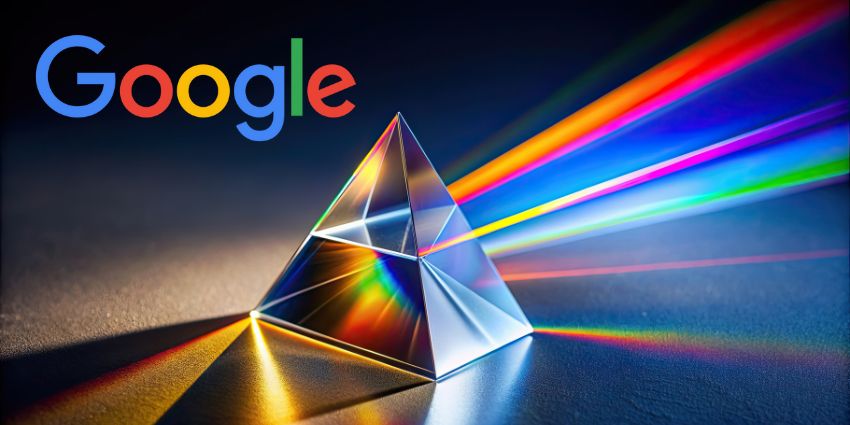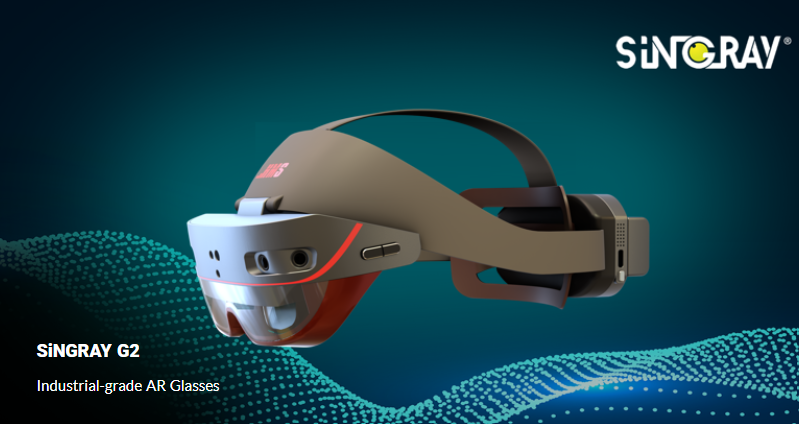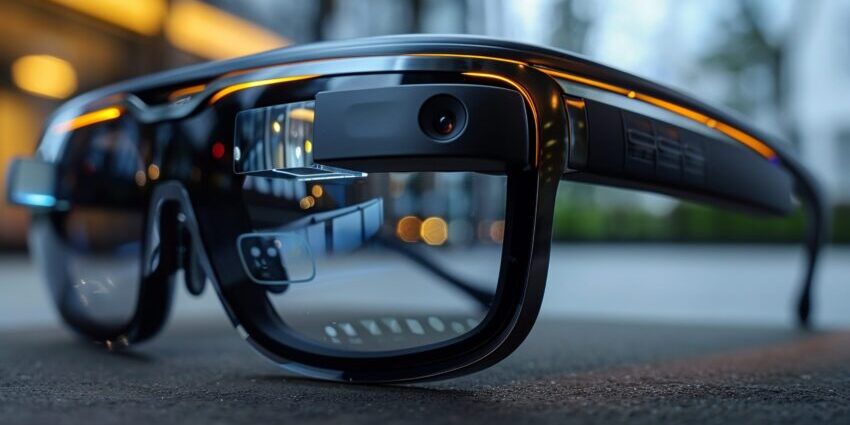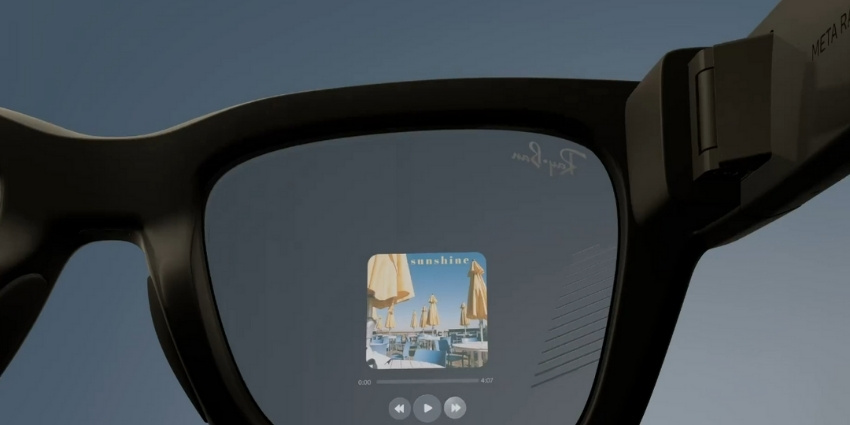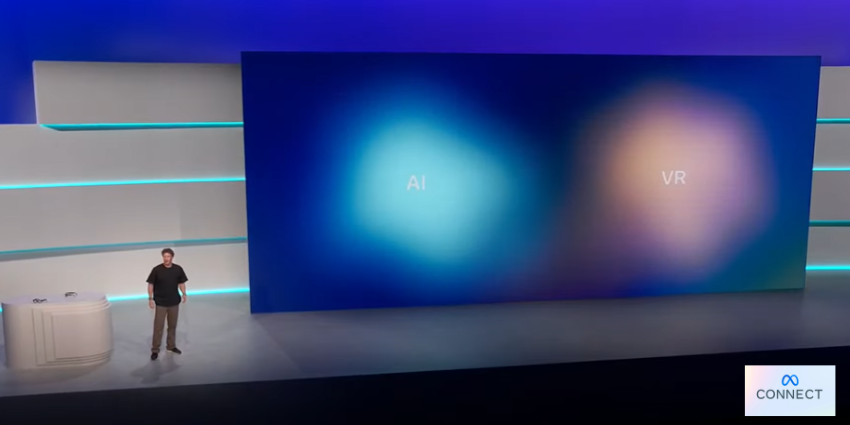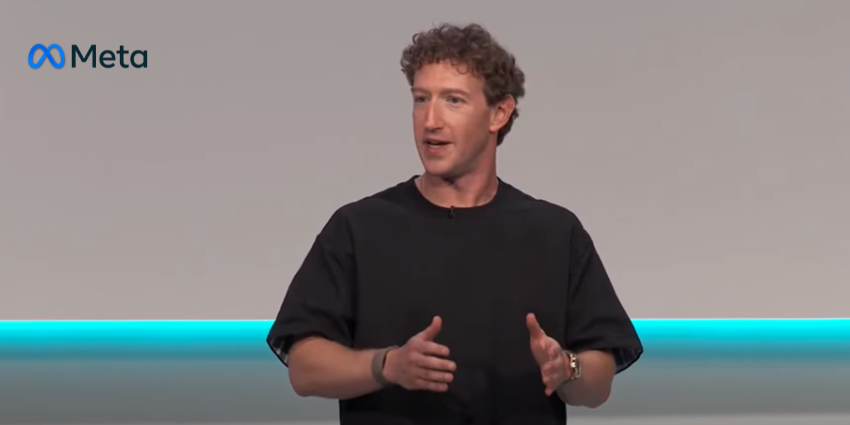The U.S. Patent and Trademark Office has published a Google patent application for a smartglasses design that seeks to reduce the amount of light lost from the microdisplay.
The Apple IP news blog Patently Apple, which shared the news, described the innovative smartglasses design as centring around a curved thin see-through lightguide with large eyebox.
This curved light-guide has a half-wave plate (HWP) that can flip input polarisations for main images to an ‘orthogonal polarisation’ and a ‘dielectric mirror’, which can act as a ‘weak analyser’ to dim side images.
In the background section of Google’s patent application, it explains how it is improving experiences by limiting the amount of light that escapes: “Light transmitted from a microdisplay to a user’s eye in an eyewear display device generally undergoes multiple reflections, refractions, diffractions, and/or changes in polarisation that can result in stray light within the system.
“Stray light within an eyewear display device reduces image contrast and can create haziness and ghost images in the field of view.
“Minimising stray light in eyewear display devices provides a user with a more enjoyable viewing experience while also reducing eye fatigue.”
In December, 2024, the news website Mashable found that Google had patented smart glasses with an adaptive assistant which responds to the user’s spoken commands and where they are focussing.
The automated assistant would show suggestions on the smart glasses screen, which the users could then interact with using their gaze.
As with its more recent patent, it is not clear whether Google will ever actually build these designs, if it will contribute to partner efforts, or whether it is simply an exploration of the technology.
The latest patent application outlines a number of potential design iterations that it calls ‘embodiments’, allowing itself a greater degree freedom if it does choose to put its designs to use: “In some embodiments, the device includes a frame to carry a lens, wherein at least a portion of the curved lightguide and a first portion of the incoupler are disposed within the lens and a second portion of the incoupler is disposed within the frame.
“In some embodiments, the first portion of the incoupler has a spherical eye-side surface and the second portion of the incoupler has a non-spherical eye-side surface.
“Some embodiments relate to techniques for dimming side images in a curved lightguide by utilising a polarised light source combined with a half-wave plate (HWP).”
Project Astra
Could this design be related to ‘Project Astra’? Project Astra is Google’s AR smartglasses prototype introduced at Google I/O in May 2024, through which the company plans to create the “ultimate” AI assistant.
Based on Google’s Gemini technology, Project Astra will provide users with access to an intuitive AI assistant that can perform various tasks like interpreting contenting and answering questions.
Initially, Google had promised that Astra would be available via the Gemini app in 2024 but that was later corrected by Google’s CEO, Sundar Pichai, during its Q3 earnings call, who said the AR smartglasses would be released in 2025.
Whether the patent application is directly connected to Project Astra or not, it is yet more evidence of Google’s interest and involvement within the world of augmented reality.
Google has of course been in an AR technology partnership with Qualcomm and Samsung since the beginning of 2024, but the sector is yet to see the same level of commitment to AR as major rivals such as Meta and Apple. These tech giants often choose to concede specific areas of technology to one another rather than competing directly.
AR may be too big of a pie to simply pass over, however, especially with predictions that the XR market will reach $60 billion by 2030, or even $1.1 trillion, according to Transparency Market Research’s report.
